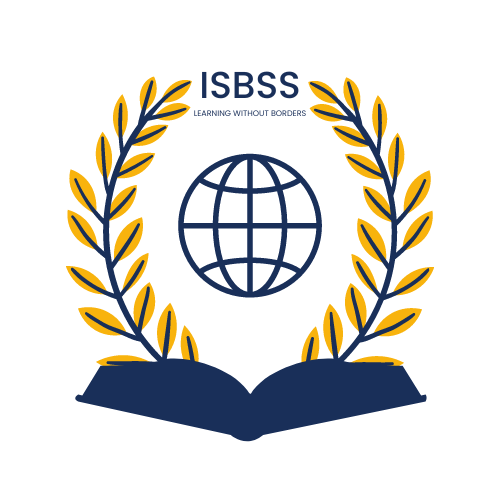
Reducing the Digital Divide: Can Online Education Be the Great Equalizer?
In a world where technology increasingly shapes access to knowledge and opportunities, the digital divide remains a major barrier to equal opportunities. While some benefit from an education enriched by advanced digital resources, others are left behind due to limited access to the internet, technology, and digital literacy.
In response to this reality, online education emerges as a potential solution to bridge these gaps. But can it truly serve as the great equalizer, ensuring that all individuals—regardless of their socio-economic background or geographic location—have equitable access to quality education?
This article explores the challenges and opportunities of online education, highlighting its potential to close learning gaps, promote inclusion, and prepare a new generation of students for a globally connected and digital future.
What is the Digital Divide?
The digital divide refers to the inequality of access to the internet, technology, and digital skills, creating a deep gap between those who can fully participate in the digital world and those who are excluded from it. In developing markets, this issue disproportionately affects students from disadvantaged backgrounds, limiting their access to online educational resources, interactive tools, and distance learning opportunities. This lack of digital infrastructure and technological literacy not only hinders their academic development but also their ability to integrate into an increasingly digitalized economy.
One of the goals of globalization was to facilitate commercial exchanges and promote equal access to information through technological advancements. However, these tools have primarily benefited developed countries, creating a digital ecosystem that supports their economic growth and technological dominance. While internet access and social media usage have expanded in developing countries, digital coverage remains a significant issue, exacerbating inequalities.
An Alarming Educational Imbalance
Although globalization and digital transformation have propelled wealthier nations forward, many developing countries—particularly in Africa—continue to lag behind. Many young individuals, burdened by family obligations, economic limitations, and restricted access to quality education, see their aspirations shattered. The restricted access to international education, coupled with weak local infrastructure, fosters a sense of hopelessness that weighs heavily on these societies.
In this context, the digital divide deepens the exclusion of ambitious young individuals who, as Amartya Sen’s Capability Approach suggests, seek to expand their capabilities but are systematically cut off from opportunities. Many resort to migration as their only hope, often risking their lives in the process. This raises a critical question: Does the technological dominance of industrialized nations perpetuate a modern form of neocolonialism by limiting access to global education?
The Multiple Dimensions of the Digital Divide
There are two primary aspects of the digital divide:
- Access – The lack of high-quality infrastructure and the high cost of technology prevent many individuals from accessing the internet.
- Usage – Even when access is available, a lack of digital literacy and technical skills prevents users from fully benefiting from online learning opportunities.
The Cost Barrier: A Major Obstacle
Africa provides a stark illustration of this issue. The uneven technological advancements across the continent have led to a two-speed growth pattern. Internet access remains prohibitively expensive for most.
“Africa remains one of the regions with the highest fiber internet prices.” — Jeune Afrique, October 1, 2024
To adapt, many young people rely primarily on mobile phones for internet access. However, according to UNESCO, around 250 million children remain out of school. Despite improvements like the expansion of 3G and 4G, insufficient technological and electrical infrastructure makes internet access unstable and highly unequal.
According to Internet Society, internet usage in Africa increased by 23% between 2019 and 2021. While initiatives exist to improve digital coverage, their success largely depends on political will and government investment. Unfortunately, a lack of commitment from policymakers results in unaffordable costs for the general public.
The Democratic Republic of the Congo (DRC) provides a striking example. The average monthly internet subscription costs 25,000 FCFA (approximately $50), which represents nearly 7% of the per capita GDP, estimated at $702.32 in 2024. For comparison, in the U.S., this would be equivalent to a monthly internet bill of $4,900 for someone earning $70,000 per year.
The Role of Governments and Infrastructure
The lack of investment in digital infrastructure limits access to equitable education and restricts job opportunities for young graduates. In many developing regions, technological infrastructure remains rudimentary, with limited access to stable internet connections and modern computing equipment. This digital divide hinders access to online learning platforms and significantly reduces opportunities for acquiring the skills needed in the global job market.
However, innovative initiatives demonstrate that this gap can be bridged. Some governments, in collaboration with international organizations and technology companies, have launched projects to democratize internet access through satellite networks, community access points, and hybrid learning models that require minimal data consumption. Similarly, universities and educational institutions are increasingly integrating affordable digital solutions, enabling students to bypass some infrastructural limitations.
To make these efforts truly effective, strong political will and sustained investment are required to ensure broader digital coverage and lower technology costs. Enhancing digital infrastructure is not just an educational challenge—it is also a key driver of economic development and equal opportunity in an increasingly interconnected world.
Success Stories: Bridging the Digital Divide
Despite the challenges, several regions and institutions have successfully implemented innovative solutions to create a more inclusive and accessible education system.
- In Kenya, “M-Shule” leverages mobile technology to deliver personalized educational content via SMS, enabling students without internet access to continue learning.
- The “Kolibri” project, developed by Learning Equality, provides an offline learning platform, allowing students and teachers to download educational resources for use without an internet connection.
- India’s “Digital India” initiative aims to expand rural internet connectivity while offering free digital learning resources to students.
- In Brazil, the University of São Paulo has developed low-bandwidth solutions, ensuring that students can access coursework and educational materials without requiring high-speed internet.
These examples highlight how tailored strategies and digital innovation can make education accessible, even in resource-limited environments.
The Role of ISBSS: Expanding Access to Education
Recognizing the digital barriers that hinder education, the International School of Business, Social Sciences, and Technology (ISBSS) is committed to providing accessible and inclusive education, regardless of geographic and economic constraints.
Optimized Digital Platforms
ISBSS utilizes a low-bandwidth learning platform, allowing students to access courses with limited internet connectivity.
Educational content is provided in multiple formats (compressed videos, downloadable PDFs, and educational podcasts) to ensure accessibility for students in low-connectivity regions.
Flexible Learning Structures
ISBSS embraces a blended learning model, combining asynchronous and synchronous courses tailored to students’ realities—whether they are working professionals, entrepreneurs, or career changers.
The integration of AI-driven learning tools allows for personalized learning experiences, adapting to each student’s needs and learning pace.
Strategic Partnerships to Enhance Accessibility
ISBSS collaborates with educational institutions, international organizations, and tech companies to provide digital resources, reduce tuition costs, and offer scholarships to students from disadvantaged backgrounds.
Conclusion: Towards a More Equitable Digital Future
The digital divide is not an inevitability—it is a challenge that must be addressed to build a more inclusive and equitable world. By combining technology, flexibility, and strategic partnerships, ISBSS positions itself as a key player in the fight against digital exclusion.
Access to quality education should not be a privilege reserved for developed nations. By rethinking how knowledge is disseminated, ISBSS aims to transform education into a tool for empowerment and global progress.



